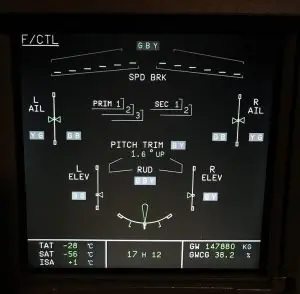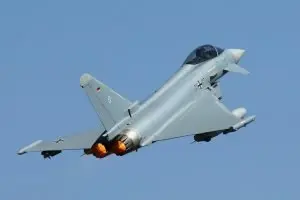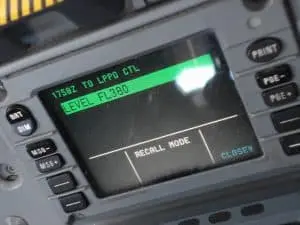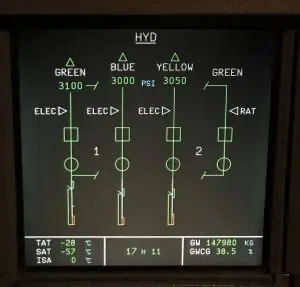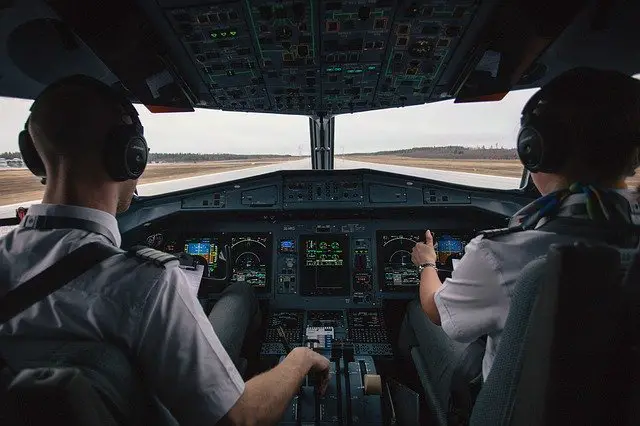
Pete has been flying aircraft for the last 20 years. He has flown everything from light piston aircraft up to heavy jets as both First Officer and Captain. He’s currently enjoying life flying the Airbus A330 for a major international airline.
Many people wonder what pilots do in the cruise. It can be hard to understand what can keep pilots busy even on very long flights. There is an idea that pilots take off, hit the autopilot button and relax. But pilots are not passengers on their aircraft – there are many things that keep pilots busy during flight.
Table of Contents
I’m no stranger to long flights – in fact, all I currently do it long-haul flying. It’s quite different from short haul multi-sector flights that may have you doing 2, 4, 6 or even more flights a day!
Generally long-haul flying consists of one long (sometimes very long!) flight. And while people may be able to understand pilots being busy in congested airspace like over the U.S. or Europe, what they don’t understand is that even in the middle of the Atlantic or Pacific Oceans there’s still plenty to keep pilots busy.
The airline systems and procedures we follow are designed in such a way that there is usually something for the pilots to be doing, considering or planning.
Let’s take a look.
What do pilots do during the cruise?
The “backup plan”
During the cruise we always have a “Plan B” – a back up plan just in case something happens and we have to act quickly.
Most things in aviation happen slowly. Minor technical faults that need to be dealt with, passenger connection issues, working out the best time to climb to our planned cruising altitude etc.
There are, however, a short list of things where immediate reaction is required: an engine failure or a rapid decompression followed by emergency descent, for example.
Most technical issues are dealt with through the ECAM (Electronic Centralized Aircraft Monitor) or the QRH (Quick Reference Handbook), but there is a short list of “memory items” for each aircraft.
These are tasks that must be actioned from memory, without delay. An explosive depression is not the time to be looking for checklists!
Learn more about memory items here.
Logging on to CPDLC (Controller Pilot Data Link Communications) will ensure we have a direct link to ATC, a great backup to have in case of a radio failure.
Ensuring we have an active ADS-C (Automatic Dependent Surveillance-Contract) connection with ATC means Air Traffic Control will have an accurate picture of our location, even in the middle of the ocean.
As part of our contingency (or backup) planning we select suitable airports along our route. We get regular weather updates via ACARS (Aircraft Communication, Addressing and Reporting System) and check NOTAMs and performance figures to choose places where we could land in a hurry, if we had to.
This is kept under constant review. As we cross the Atlantic, for example, leaving Canada we might have St John’s International as our selected alternate. Approaching midway Keflavik, Iceland, may be our go to option depending on the latest weather reports. Further east we may use Shannon, Ireland or Prestwick, Scotland as suitable “boltholes” if we needed to get on the ground quickly.
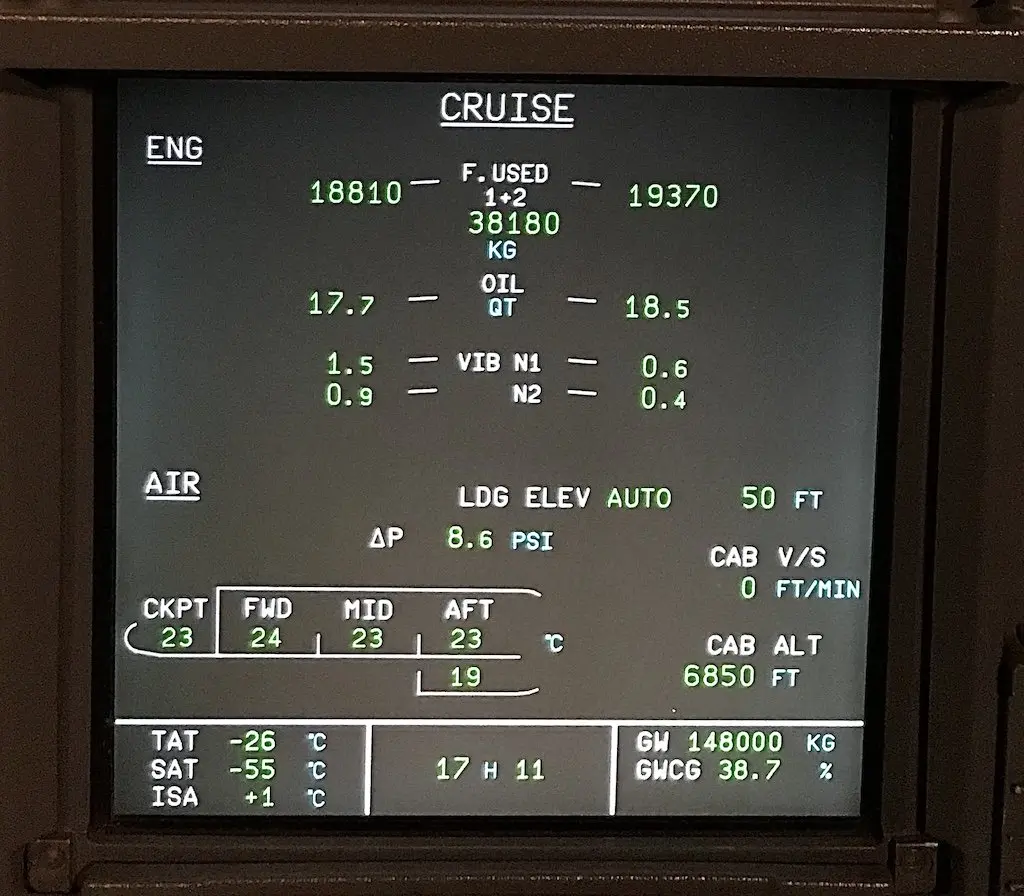
System Monitoring
Even with modern systems such as ECAM or EICAS (electronic displays that show all the systems on the aircraft), which should alert us to issues it detects, we still complete regular systems checks.
These checks are essential to make sure everything is as it should be – and to notice any trends before warnings have been triggered – for example, a slowly decreasing hydraulic quantity.
We update our flight plan as we pass reporting points and complete fuel checks. Routine monitoring of the fuel on board is essential to ensure we are not burning more fuel that planned, or to detect fuel leaks.
Loss of fuel has happened more than you may realise (or want to think about!): What happens in an aircraft runs out of fuel?
Interacting with Air Traffic Control
While it might be obvious to most that in busy airspace we’re constantly dealing with Air Traffic Control, even in the middle of the Ocean we still communicate with ATC and pass requests for changes in altitude or routing around areas of turbulence or bad weather.
These days modern systems such as CPDLC (Controller Pilot Data Link Communications) allow us to communicate with ATC through text-based systems. We can choose from a selection of pre-formatted text messages to request weather avoidance, speed changes, a climb to a higher level etc.
Another important thing we do is monitor guard frequency on our second radio. This is even more important in remote areas as it may be the fastest way for an aircraft to alert others around them to an emergency situation.
Planning Ahead
As you can see, one of the main tasks for pilots involves planning ahead – the “what ifs”. And not just abnormal situations and technical failures, but also the type of arrival we can expect at our destination.
In the cruise we’ll be regularly monitoring the forecast weather at our destination and planning our descent and arrival.
Usually with an hour to go (on longer flights) we’ll begin the task of briefing the other pilot on our plan for the approach. Taking into account the expected weather and any NOTAMs we’ll review the planning arrival routing (STAR) and landing runway.
Again, we’ll discuss contingencies: what if we can’t land? We’ll discuss the go-around actions we’ll perform to get the aircraft safely flying away from the ground.
And, as you may expect by now, we’ll consider “plan b” one last time – what is our alternate airport if we can’t land at our destination for whatever reason?
What is the routing to our alternate airport and, importantly, how much fuel do we need to get there. A review of the fuel required will allow us to set a “bottom line” – the point at which we have decided we will divert.
Having all of this planned in advance means the day something goes wrong we’ll be ready for it.
As you can see, even on long flights we’re kept pretty busy!
[Featured image: Frame Harirak/Unsplash]
If you found this article interesting please take 5 seconds to share this on your favorite social media. Thanks so much, I really appreciate it! [email protected]

Pete has been flying aircraft for the last 20 years. He has flown everything from light piston aircraft up to heavy jets as both First Officer and Captain. He’s currently enjoying life flying the Airbus A330 for a major international airline.

